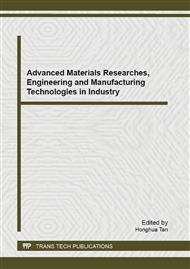[1]
Bosch Technical Instruction, Diesel Distributor Fuel-Injection Pumps, Edition 94/95, Robert Bosch GmbH(1983).
Google Scholar
[2]
Bosch Technical Instruction, Governors for Diesel In-Line Fuel-Injection Pumps, Edition 95/96, Robert Bosch GmbH(1996).
Google Scholar
[3]
Bosch, Diesel Engine Management, 4th edition, Robert Bosch GmbH(2005).
Google Scholar
[4]
Needham J R and Whelan S, Meeting the Challenge of Low Emissions and Fuel Economy with the Ricardo 4-Valve HSDI, Autotech(1993).
Google Scholar
[5]
Bird G L, The Ford 2. 5 litre High Speed Direct Injection Diesel Engine - Its Performance and Future Possibilities, SAE paper 850262(1985).
DOI: 10.4271/850262
Google Scholar
[6]
R. J. Menne, P. J. Lawrence, R. W. Horrocks, and P. S. Robertson, 4-Valve Light-Duty DI Diesel Developments, SAE paper 941926 (1994).
DOI: 10.4271/941926
Google Scholar
[7]
Heywood, J. B., Internal Combustion Engine Fundamentals, McGraw-Hil, (1989), 491-566.
Google Scholar
[8]
Lefebvre, A. H., Atomization and Sprays, Hemisphere (1989).
Google Scholar
[9]
Schweitzer, P.H., Penetration of Oil Spray, Pennsylvania State College Bulletin, 46 (1937).
Google Scholar
[10]
Wakuri, Y., Fujii, M., Amitani, T. and Tsuneya, R., Studies of Penetration of Fuel Spray in a Diesel Engine, Bull. JSME, 3(1960), 123-130.
DOI: 10.1299/jsme1958.3.123
Google Scholar
[11]
Dent, J.C., A Basis for the Comparison of Various Experimental Methods for Studying Penetration, SAE paper No. 710571, (1971).
Google Scholar
[12]
Reitz, R.D. and Bracco, F. V., Mechanism of Atomization of a Liquid Jet, Phys. Fluids,. 25-2, (1982), 1730-1741.
DOI: 10.1063/1.863650
Google Scholar
[13]
Rife, J. and Heywood, J. B., Photographic and Performance Studies of Diesel Engine Combustion with Rapid Compression Machine, SAE paper No. 74098 (1974).
DOI: 10.4271/740948
Google Scholar
[14]
Hiroyasu, H. and Arai, M., Fuel Spray Penetration and Spray Angle in Diesel Engines, Trans. JSME, 44-385, (1980), 3208-3220.
Google Scholar
[15]
Tennison, P. J., Georjon, T.L., Farrell, P. V. and Reitz, R. D., An Experimental and numerical study of sprays from a common rail injection system for use in an HSDI Diesel engine, SAE paper 980810 (1998).
DOI: 10.4271/980810
Google Scholar
[16]
Lee, C. H., An Empirical Correlation between Spray Dispersion and Spray Tip Penetration from an Edge Detection of Visualized Images under the Flow Condition of a Solid Body Rotating Swirl, Jounral of Visualization, Vol. 11, No. 1, pp.55-62 (2008).
DOI: 10.1007/bf03181914
Google Scholar
[17]
R.J.H. Klein-Douwel, P.J.M. Frijters, L.M.T. Somers, W.A. de Boer, R.S.G. Baert, Macroscopic diesel fuel spray shadowgraphy using high speeddigital imaging in a high pressure cell, Fuel 86 (2007) 1994–(2007).
DOI: 10.1016/j.fuel.2006.11.039
Google Scholar
[18]
Paolo E. Santangelo, Characterization of high-pressure water-mist sprays: Experimental analysisof droplet size and dispersion, Experimental Thermal and Fluid Science 34 (2010) 1353–1366.
DOI: 10.1016/j.expthermflusci.2010.06.008
Google Scholar
[19]
Hiroyasu, H., Diesel Engine Combustion and its Modeling, COMODIA85, (1985), 53-75.
Google Scholar
[20]
Hiroyasu, H., Kadota, T. and Arai, M., Supp. Comments: Fuel Spray Characterization in Diesel Engines, in J. N. Mattavi and C. A. Amann (eds. ), Combustion Modeling in Reciprocating Engines, Plenum, (1980), 369-408.
DOI: 10.1007/978-1-4899-5298-1_12
Google Scholar
[21]
M. Xu, K. Nishida and H. Hiroyasu, A Practical Calculation Method for InjectionPressure and Spray Penetration inDiesel Engines, SAE Paper920624 (1992).
DOI: 10.4271/920624
Google Scholar


